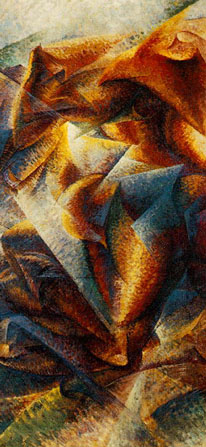ww Did You Know? ww
| |

The Origins of the @ Sign
Although commonly associated with modern technology such as the computer
and internet, in fact, the @ sign dates back to the 6th or 7th centuries,
when Latin scribes adapted the symbol from the Latin word ad, meaning
at, to or toward. In an attempt to simplify their pen strokes, they created
the ligature (combination of two or more letters) by exaggerating the
upstroke of the letter "d" and curving it to the left over the
"a." In much more recent history, the 18th Century, the @ sign
was used in commerce to indicate price per unit, e.g. 2 chickens @ 10
pence.
While in the English language, @ is referred to as the "at sign,"
it is neverthless interesting to note that other countries have different
names for the symbol . Below is a list of such names taken from Wikipedia
and Word Wide Words.
- Afrikaans-In South Africa, it is called aapstert, meaning "monkey's tail."
- Arabic - The @ symbol does not appear on Arabic keyboards, only keyboards in both Arabic and English. The Arabic word for @ is fi, the Arabic translation of at
- Bosnian, Croatian and Serbian - In these countries, it is referred to as the "Crazy I"
- Cantonese - In Hong Kong it is generally referred to as "the at sign," just as in England and America
- Catalan - In Catalonia, it is called arrova, a unit of weight
- Czech - In the Czech Republic, it is called zavinac, meaning "rollmop," or "pickled herring"
- Danish - It is called alfa-tegn, meaning "alpha-sign" or snabel-a, meaning "elephant's trunk" or grisehale, meaning "pig's tail"
- Dutch - Since English is prominent in the Netherlands, the English "at" is commonly used. However, the Dutch also call it apestaart, meaning monkey's tail," apestaartje, meaning "little monkey's tail" or slingeraap, meaning "swinging monkey"
- French - In France, it is called arobase the name of the symbol. It is also referred to as un a commercial, meaning "business a", a enroule, meaning "coiled a", and sometimes escargot, meaning "snail" or petit escargot, meaning "little snail"
- German - In Germany, it is called Affenschwanz, meaning "monkey's tail" or Klammeraffe, meaning "hanging monkey"
- Greek - In Greece, it is called papaki, meaning "little duck"
- Hebrew - It is shablul or shablool, meaning "snail" or a shtrudl, meaning "strudel"
- Hungarian - In Hungary, it is called a kukac, meaning "worm" or "maggot"
- Italian - In Italy it is called chiocciola, meaning "snail" and a commerciale, meaning "business a"
- Japanese - In Japan, it is called atto maaku, meaning "at mark"
- Mandarin Chinese - In Taiwan it is called xiao lao-shu, meaning "little mouse," lao shu-hao, meaning "mouse sign," at-hao, meaning "at sign" or lao shu-hao, meaning "mouse sign"
- Norwegian - In Norway, it is called either grisehale, meaning "pig's tail" or kro/llalfa, meaning "curly alpha." In academia, the English term "at" is widely used
- Polish - In Poland, it is called malpa, meaning "monkey." It is also called kotek, meaning "little cat" and ucho s'wini, meaning "pig's ear"
- Portuguese - In Portugal it is called arroba, a unit of weight
- Romanian - In Romania, it is called la, a direct translation of English "at"
- Russian - Russians officially call it a kommercheskoe, meaning "commercial a", but it is usually called sobachka, meaning "little dog"
- Spanish -- Like in Portugal, in Spain it is called arroba, a unit of weight
- Swedish - The official term in Sweden is snabel-a, meaning "trunk-a," or "a with an elephant's trunk"
- Thai - There is no official word for it in Thai, but it is often called ai tua yiukyiu, meaning "the wiggling worm-like character"
- Turkish - In Turkey, most e-mailers call it kulak, meaning "ear"
Source
http://worldwidewords.org/articles/wereat.htm
http://www.webopedia.com/DidYouKnow/Internet/2002/HistoryofAtSign.asp
